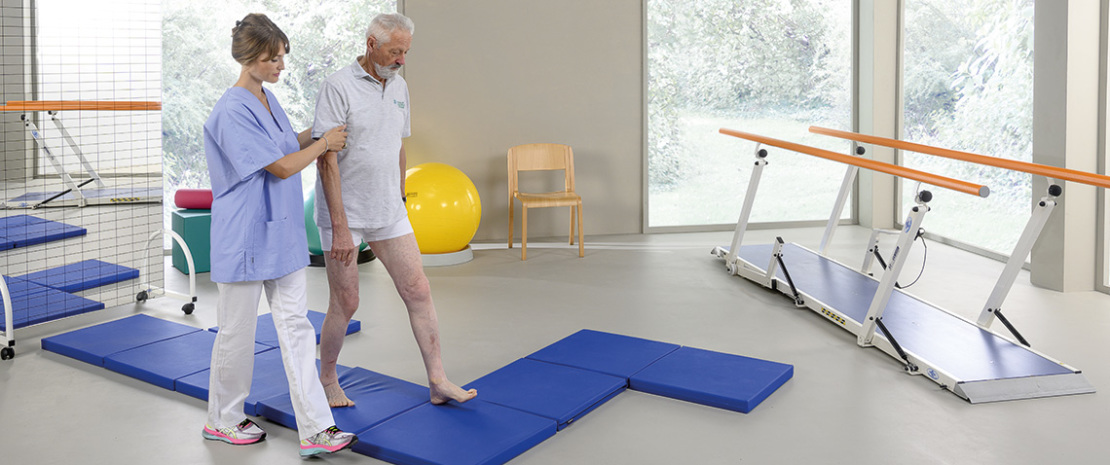
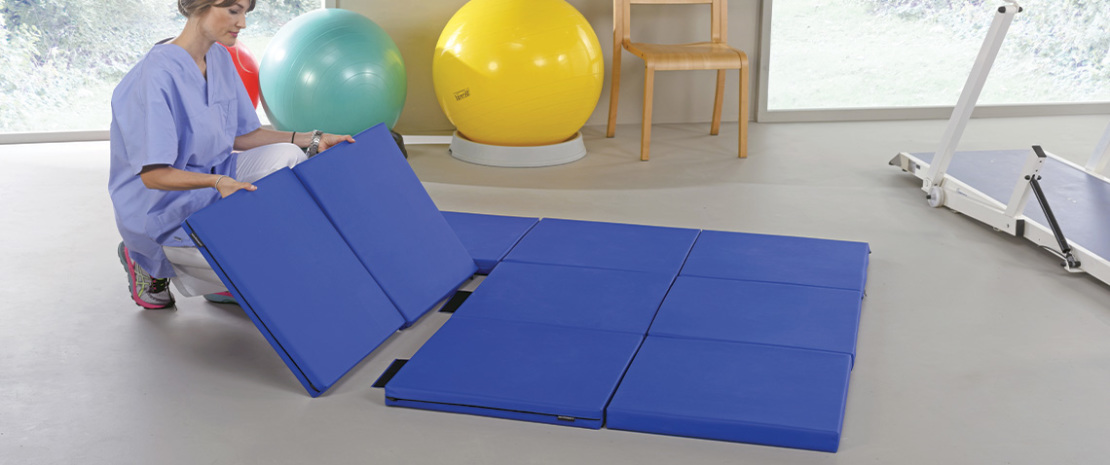
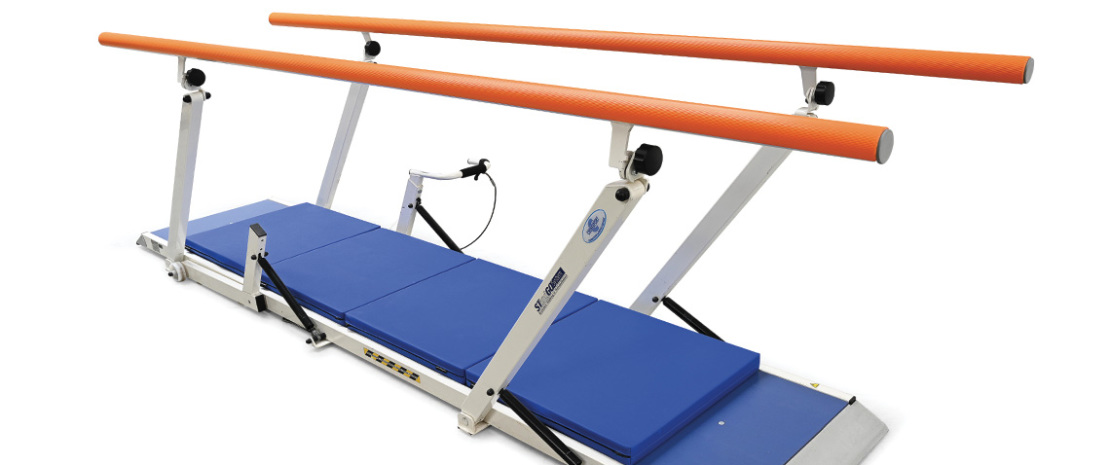
As part of the continuous pursuit of new proposals and solutions to apply when dealing with patients’ balance and proprioception we have designed a number of cushions with various densities and which are unrecognizable by users to create further adjustable unstable situations also during gait training.
Proprioceptive pathways help balance and stabilize the patient. They can be composed of boards or cushions of different densities, which joined together, creating a path.
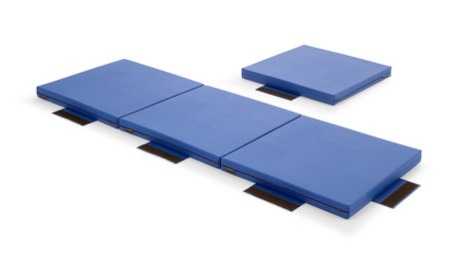
The therapist can also create longer and more articulated walk paths as well as larger work areas to give the patient the possibility to perform proprioceptive and balance exercises dynamically or statically for neuromotor re-education even with the patient in all-four and in a sitting position. Users or patients have no clues to identify the different densities of the pads.
Chinesport variable density pads have been submitted to assessments, clinical trials, and they find an every-day use in several rehabilitation hospital facilities. They can be used as follows:
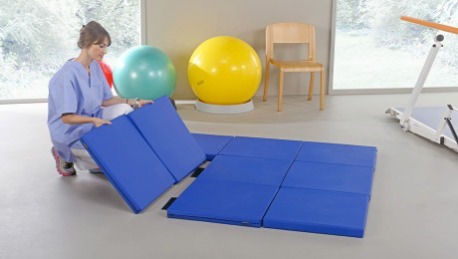
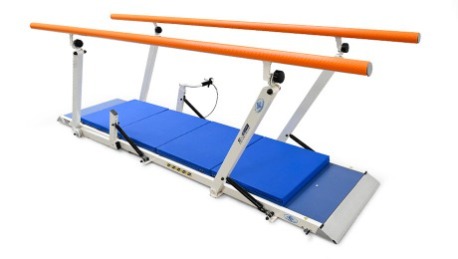
To increase safety for the patient during the performance of proprioceptive dynamic and balance exercises, he/she can be asked to walk in between a system of parallel bars. The size of the proprioceptive pads has been projected so as to fit at the base of our parallel bars for rehabilitation.
After having navigated the path formed by the proprioceptive cushions we invite the patient to perform a static balancing exercise.
Dynamic and static balance are different experiences. Switching quickly from one to the other can be a challenge for patients with reduced proprioceptive abilities (e.g. the eldery). The therapist stops the patient on a particular cushion which they feel challenged the patient to keep balance. Now the patient is invited to remain standing still on one leg. By not remaining in close proximity of the patient, the therapist adds a particular challenge by not providing a sense of security.We could even say the therapist introduces a sense of risk, which is present in every day life. By allowing the patient to use the upper extremities for balance we activate the upper body and stimulate the hip strategy. This is particularly useful in patients with hip problems, e.g. after hip surgery or a femur fracture. This exercise can be progressed by asking the patient to perform the same exercise with eyes closed.
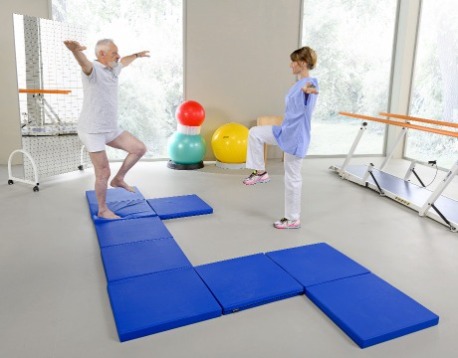
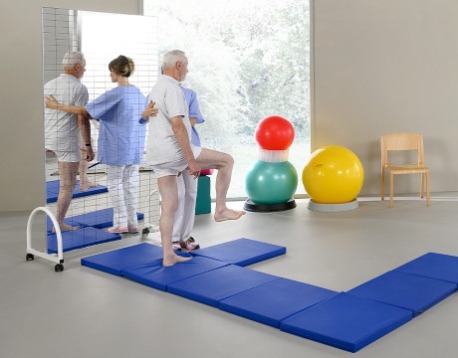
After having navigated the path formed by the proprioceptive cushions we invite the patient to perform a static balancing exercise.
Dynamic and static balance are different experiences. Switching quickly from one to the other can be a challenge for patients with reduced proprioceptive abilities (e.g. the eldery). The therapist stops the patient on a particular cushion which they feel challenged the patient to keep balance. Now the patient is invited to remain standing still on one leg. The therapist remains close for additional security and can guide the patient.
This exercise can be progressed by asking the patient to perform the same exercise with eyes closed. This exercise can be a very logical follow through exercise from the previous (above) exercise. The way the cushions lay out in a path helps the therapist to create new exercises without wasting any time. The next cushion could be of a different hardness, which challenges the proprioceptive feedback mechanisms of the patient. Note how posture changes between both exercises although the patient is asked to stand on one leg, but in a different way. Using the posture mirror can help build awareness of posture for the patient.
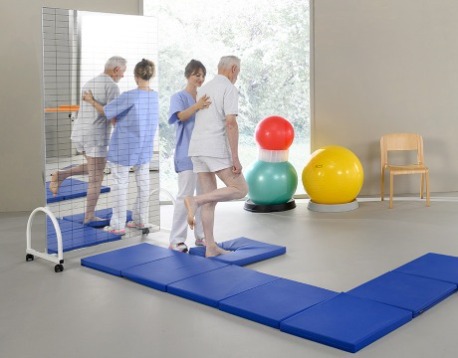

Different density pads - Introduction - The set - Plantar reactivation set - Airex pads - Modules & sensory bags - Proprioceptive boards - Padded boards - Wooden boards - Other exercise boards - Movin’step - Bouncing trampolines - Padded cushions - Discosit & other inflatable tools - To improve sitting posture - Posture mirrors
Brochure, Ed. February 2025, English. 32 pages.
